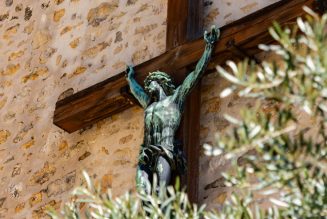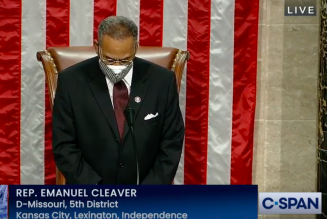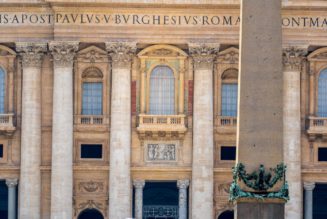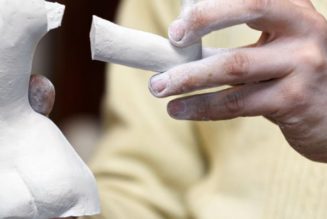ROME – There are certain place names so associated with a particular chapter in history that merely mentioning them conjures up a truckload of associations and emotions.
Such is “Gettysburg,” “Dunkirk,” “Robben Island,” even “Woodstock” – and, increasingly, such is “Lampedusa,” as we mark the seventh anniversary of one of the briefest and yet most paradigmatic papal trips of all time.
Catholic nerds undoubtedly will be delighted to know that Lampedusa, by now so inextricably linked to Pope Francis’s relentless efforts to promote good works, is actually one of three “Pelagian Islands” considered part of the Italian region of Sicily. However, the name is not a reference to the heretical fourth century monk who taught that human beings can achieve salvation through their own efforts, but rather a Greek word meaning “open sea.”
Located off the coast of Sicily, Lampedusa is Italy’s southernmost point – it’s actually closer to Tunisia, at 70 miles, than to Sicily at 120, and geologically it’s part of the African continent. It’s long been a holiday destination, with its “Rabbit Beach” voted the best beach in the world in 2013 by TripAdvisor.
At various points Lampedusa has been part of Spain, Malta, the British empire, the Kingdom of Naples, and, since 1861, Italy, though its loyalty to any of the above always has been fairly nominal. (The story goes that in 1943, during World War II, a British fighter pilot was forced to land on the island when he ran low of fuel – whereupon the commander of the local Italian garrison promptly surrendered to the startled aviator, who was all by himself.)
None of that, however, is what’s made Lampedusa globally evocative. Instead, it’s the island’s role as the primary entry point into Europe for wave after wave of migrants and refugees fleeing Africa, the Middle East and Asia.
It was 1998 when an immigrant reception and detention center (in Italian, centro di prima accoglienza) was first established on Lampedusa, in response to a growing number of migrants, refugees and asylum-seekers crossing the Mediterranean Sea. Originally the majority were Africans from nations such as Ghana, Mali and Nigeria, driven by poverty and regional violence.
Those initial ripples of the late 1990s soon became a tidal wave in the 2000s, especially after the onset of the Syrian Civil War in 2011, along with convulsions in Tunisia and Libya too. The center’s capacity of 800 was overrun, often housing 2,000 or more migrants at a time. Tens of thousands more were housed in makeshift quarters on a nearby open field. Conditions were notoriously primitive – a celebrated report by RAI, Italy’s national broadcaster, once compared the Lampedusa center to a Nazi concentration camp and Abu Ghraib.
What elevated Lampedusa into iconic status wasn’t just its gripping human drama, but the fact that an electric new pope chose the spot for his first trip outside Rome on July 8, 2013. The visit was just four and a half hours long, but rarely has a mere half-day in the life of a papacy been so replete with both symbolism and substance.
Upon his arrival, Francis threw a wreath into the sea to commemorate the thousands of migrants and refugees who’ve died trying to make the crossing over the Mediterranean in rickety, overcrowded, unsafe boats. One estimate is that some 20,000 people have drowned in the sea over the past decade.
Francis said his open-air Mass on the same field where the migrants were detained, near what’s known locally as the “boast cemetery” because of the profusion of hulks of the boats those new arrivals had taken to get there. His altar, actually, was formed by one of those boats pained for the occasion. The pope condemned what he called a “globalization of indifference” to the fate of people fleeing violence and poverty, and spent time talking, hugging and praying with several of them.
He would go on to say that seeing images of those migrants and refugees had been like a “thorn in his heart,” compelling him to go.
Since that time, Francis has referenced Lampedusa over and over again, so much so that it’s become a sort of synecdoche for his entire social and evangelical agenda. He celebrates a Mass each year to commemorate the visit, as his did yesterday, among things recalling a moment when he was speaking with an Ethiopian refugee and his interpreter left out some of the more gut-wrenching details. Later, at a reception, an Ethiopian woman told him that what the interpreter had said “isn’t a quarter of the torture and suffering they’ve experienced.”
Seven years later, one evidence of the trip’s impact is that a global coalition of NGOs has designated July 8 as the “International Day of the Mediterranean Sea” in an effort to raise awareness about the plight of migrants and refugees, as well as the ecological challenges facing the Mediterranean region, choosing the anniversary of Francis’s visit.
It’s sometimes said that if you want to understand Abraham Lincoln’s presidency, you have to go to Gettysburg. In a similar fashion, arguably you can’t understand Francis’s papacy without going to Lampedusa – the one spot on the global map more than any other, even more than his native Argentina or his adopted city of Rome, with which this pope and his vision for both the Church and humanity, forever will be associated.
Follow John Allen on Twitter at @JohnLAllenJr.









